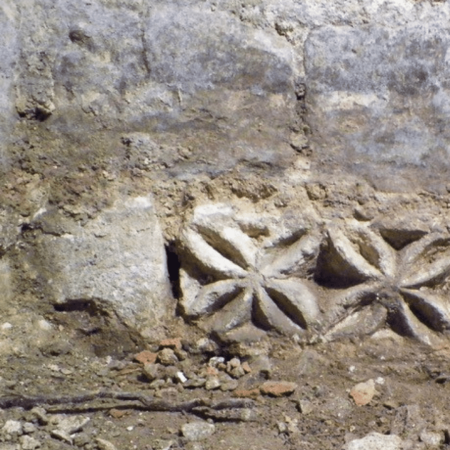It’s only when you examine an area’s historic houses carefully that you realise that those charged with deciding which should be given statutory protection don’t have a very easy job.
In a Worthys Local history Group project part funded by a grant from HAT Bill Fergie and Edward Roberts have written a delightful book about timber framed houses in the Worthies, a series of villages jut to the north of Winchester.
Bill Fergie introduces the book and describes some examples of it’s contents:
Edward Roberts and I spent quite a bit of time over the last three years examining the houses of the Worthy villages, and trying to understand them fully takes much more time than the poor inspectors working for Historic England would ever have been allowed.Currently the book is available by contacting the group via wlhg.chair@gmail.com
With the exception of just a handful that are earlier or later the majority of the 25 historic houses we examined were built between approximately 1500 and 1625. This happened to be more or less the period on which Edward and I had been concentrating in the last decade or so; and on which much of the work in the supplementary chapter of the reprinted 2016 version of Edward’s book Hampshire Houses 1250 – 1700; Their Dating and Development had concentrated. When the book was first published in 2003 Edward recognised that buildings built between about 1550 and 1625 were not well represented and, furthermore, that in Hampshire it was a particularly interesting period when vernacular house plans were going through a major transformation. This was a slow evolutionary process and took over a century to complete. It was also far from an even or smooth progression, because some house builders embraced change while others clearly resisted it. By chance the Worthys have highlighted this period of change, and thrown up some fascinating examples which required visit after visit before we were satisfied that we had more or less understood how they had evolved. Just three examples are described briefly below, but you’ll have to read the book and study the photographs and drawings to understand their complexities:-
1. Nos 6&7 Mill Lane, Abbots Worthy
The early work of Edward and others in Hampshire has established a solid database of tree ring analysis which had established, until our work in the Worthys, that the medieval hall with its open fire and smoke rising to escape through the thatched roof was no longer built after about 1570/80. Nos 6&7 was clearly built as an open hall in the medieval fashion and it was one of the few buildings tree ring dated during our work. This analysis showed that the trees used in its construction had been felled in 1610. The expert who carried out the work was so surprised that he voluntarily returned to take further samples just to assure us all that he had got it right. The date for the latest open hall to be built in Hampshire had just moved forward a generation
2. Silverstream, Bedfield Lane, Headbourne Worthy
The owner of this house had already commissioned a tree ring analysis by the time we came to examine it, and this provided a date for the felling of the trees of between 1579 and 1604. It is not always possible to identify a precise date and sometimes it is only possible to identify a fairly wide date range. The house had been built as a three bay house, and it was of a sufficiently late date for the central hall on the ground floor to have been floored over and for it therefore to have had some form of chimney for the fire. It appears this chimney was probably made of wattle and daub, but it was quickly replaced with stone that became available from the ruins of Hyde Abbey after the Dissolution as evidenced by a document in the National Archives
3. Nos 1&2 Old Farm Cottages, Abbots Worthy
These properties were originally built one substantial farmhouse, but subsequent extensions have allowed it to be occupied as two separate dwellings since at least the early 1900s. It was tree ring dated some years ago and the trees for its construction gave falling dates between 1607 and 1610. It was therefore also late enough to have had a floored over hall and a chimney. However, this appears not to have been the case and the house turned out to be something of a half-way-house, which we term “transitional” because it has features which reflect the open fire tradition of medieval living while also embracing the more modern floored hall. The present brick chimney seems only to have been constructed later in the 17th Century. Prior to that the modern floored over hall seems to have ‘borrowed’ its heat from an open fire in the adjoining kitchen via a large opening in the dividing wall.
More about the book HERE

